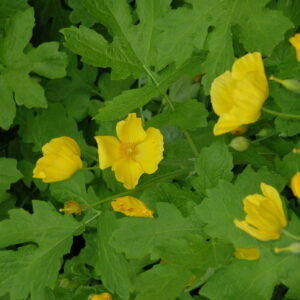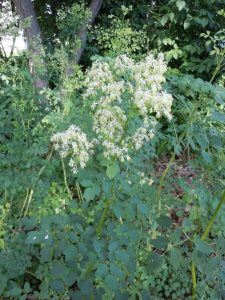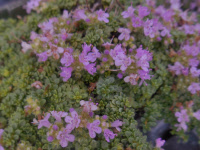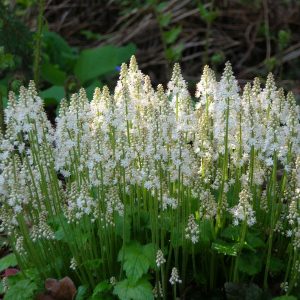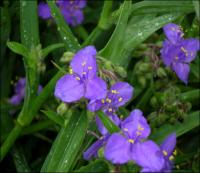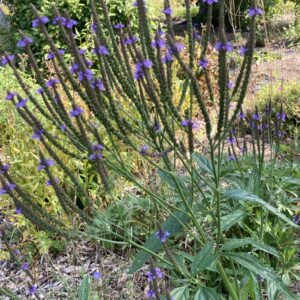Wisconsin Native
Showing 97–104 of 107 results
-
Stylophorum diphyllum Celandine poppy Z 4-9
Sunny yellow cups bloom in late spring, reblooming sporadically, atop this 12-18" tall native.
Sunny yellow cups bloom in late spring, reblooming sporadically, atop this 12-18″ tall native.
Size: 12-18" x 12"
Care: Part shade, but tolerates sun, in moist to moist well-drained soil
Native: PA west to WI, south to MO & AK. Wisconsin native.1st collected by French plant hunter extraodinaire André Michaux, who spent 11 years in North America. (1746-1802) William Robinson, father of the mixed perennial border, described this as “a handsome Poppywort … (with) large bright yellow flowers freely produced in early summer.” Self-seeds and likely you’ll be happy for it.
-
Symphoricarpos albus Snowberry Z 3-7
Small pink bell-shaped flowers turn into copious clusters of round, white berries, like miniature snowballs, grace this shrub from late summer through winter.
OUT OF STOCK
Small pink bell-shaped flowers turn into copious clusters of round, white berries, like miniature snowballs, grace this shrub from late summer through winter.
Size: 3-6’ x 3-6’
Care: sun to part shade in moist well-drained to well-drained soil
Native: Canada east to west coasts; US all states north from Virginia to California. Wisconsin native.
Wildlife Value: deer tolerant, attracts numerous birds including Hummingbirds, Towhees, Grouses, Robins, and Waxwings for nesting and food, although the fruit is poison to humans. Bees flock to the flowers’ pollen. Host for caterpillars of the Snowberry Sphinx moth and Snowberry Clearwing moth.Pauites of Oregon constructed cradle boards with the wood, sharpened the stem for digging tool and used its branches in a game of dice. The Nez Perce boiled sticks in water then used to remedy fevers, and encircled its branches around cradleboards to protect babies from ghosts. Flathead cured injured eyes with juice for the fruit and made a paste of its fruit, bark and leaves to remedy skin ailments and burns. For the Blackfoot the smoke from burning twigs blackened newly made pipes. Sioux made a diauretic from the fruit. Ojibwa speeded up convalescence for new mothers after giving birth with water infused with this. Shoshone made arrows from shoots for small birds. Collected for botany before 1753. Also collected on Lewis and Clark Expedition along the Missouri River west of Council Bluffs.
**LISTED AS OUT OF STOCK BECAUSE WE DO NOT SHIP THIS ITEM. IT IS AVAILABLE FOR PURCHASE AT OUR RETAIL LOCATION.
-
Thalictrum dasycarpum Purple meadowrue Z 4-7
Panicles of delicate dangling ivory flowers May to July, purple stems
Panicles of delicate dangling ivory flowers May to July, purple stems.
Size: 4-5’ x 2’
Care: sun to part shade in moist well-drained to moist soil
Native: All North America except Atlantic & Pacific coasts and northern Canada, Wisconsin nativeThalictrum is from Greek meaning “to flourish” or “look green.” Collected for gardens by 1842. Used by Native Americans to enliven horses by giving them seeds or rubbing a poltice on their muzzles. (Pawnee & Lakota). Meskwaki, Ponca & Potawatomi used as an aphrodisiac. Potawatomi smoked a mixture of this and tobacco before meeting their woman. HoChunk used it to perfume smoke. For Potawatomi smoking dried seeds brought luck in hunting. Oneidas consider this a medication for kidney ailments. Ponca boys made flutes from the hollow stems. Winnebago perfumed smoke with this. Lakotaa Sioux fed this to horses to stimulate energy and masticated then rubbed it on their skin to repel insects.
-
Thymus serpyllum ‘Minus’ syn. T. praecox ‘Minus’ Dwarf thyme Z 2-9
Purple flowers cover evergreen foliage in late spring on this tiny thyme-leaved plant. Good groundcover or for rock gardens
Purple flowers cover evergreen foliage in late spring on this tiny thyme-leaved plant. Good groundcover or for rock gardens
Size: 3” x 12” and spreading
Care: sun to part shade in moist well-drained to well-drained soil
Native: Europe
Wildlife Value: Deer resistant.
Size: Great for rock gardens, groundcover, drought tolerant.Thymus from the Greek word for “odor” due to the plant’s fragrance. Ancient Greeks made incense with thyme. ‘Minus’ described by Parkinson in 1640. He called it Thymus serphyllum vulgare minus.
-
Tiarella cordifolia Allegheny foam flower Z 3-9
White spikes in spring, gorgeous en masse. Make a great groundcover for shade.
OUT OF STOCK
White spikes in spring, gorgeous en masse. Make a great groundcover for shade.
Size: 6-12”x 12-24” spreading
Care: Shade to part shade in moist to moist well-drained soil
Native: Novia Scotia to Georgia, native to Wisconsin.
Awards: Royal Horticultural Society Award of Merit.Tiarella is Latin meaning little tiara referring to the form of the pistil. The common name is derived from the form of blossoms. Cherokee used this plant to remove the white coating on their tongues. For the Iroquois it increased the appetite of children and cured sores in their mouths. One of 1st No. American plants sent to Europe – grew in Tradescant the Elder’s South Lambeth nursery in 1634. Grown at America’s 1st botanic garden, Elgin Botanic Garden 1811. Botanist L.H. Bailey described Tiarella cordifolia as:” An elegant plant well worthy of general culture.” Pressed specimen in Emily Dickinson’s herbarium.
-
Tradescantia bracteata Spiderwort Z 4-9
Three-petaled rosy purple petals frame bright yellow stamens, open mornings and close by noon from June-August. Cut back for rebloom.
Three-petaled rosy purple petals frame bright yellow stamens, open mornings and close by noon from June-August. Cut back for rebloom.
Size: 12-18” x 12”
Care: full sun to part shade in moist well drained soil
Native: Minnesota south to Texas - Wisconsin native
Wildlife Value: attracts bees & butterfliesEnglish herbalist John Parkinson (1567-1650) named the Genus after John Tradescant the Younger who sent Tradescantia virginiana it to his father, gardener to Kings James III and Charles I. This prairie plant collected before 1938.
-
Tradescantia virginiana Spiderwort Z 4-9
Purple umbels of three petals with prominent yellow stamens June – October, opening in the morning and closing at noon.
Purple umbels of three petals with prominent yellow stamens June – October, opening in the morning and closing at noon.
Size: 18-24" x 24"
Care: Full sun to part shade in moist to moist well-drained soil
Native: From New York to South Dakota, Virginia and Arkansas and all states in between. Wisconsin native.
Wildlife Value: Bumblebees and honeybees eat the nectar and collect the pollen.Named after John Tradescant, an English botanist and gardener to Kings James III and Charles I. Parkinson (1567-1650) explains the origin of this plant: “This Spider-wort is of late knowledge, and for it the Christian world is indebted unto that painfull industrious searcher, and lover of all natures varieties, John Tradescant who first received it of a friend, that brought it out of Virginia,” (1639). It was probably sent to mainland Europe in 1500’s. Grown at America’s 1st botanic garden, Elgin Botanic Garden 1811. Tradescantia was cherished by the Dakota Indians for its beauty. Cherokee ate the young greens and prescribed it to cure stomachaches after overeating, female illnesses, cancer, and insect bites. Menominee revived those “defiled by touch of bereaved.” Natives applied a poltice of the leaves topically for insect bites and stings. By 1659 ones with white, light blue and reddish flowers grown in England. According to Monticello.org the root exuded a gummy liquid which, when inserted into a cut on top of a person’s head remedied the person’s “craziness.”
-
Verbena hastata Blue vervain, Simpler’s joy Z 3-9
Bright purplish-blue candelabra-like spikes from July to September
Bright purplish-blue candelabra-like spikes from July to September
Size: 2-4’ x 2’
Care: sun to part shade in moist or moist well-drained soil
Native: eastern 2/3rds of No. America, Wisconsin native
Wildlife Value: Cardinals & Sparrows eat the seeds. Food for larvae of Buckeye butterfly.Native Americans used plant as remedy for coughs, colds, and fever. Mahuna Indians of So. California used the root to cure complicated stomach fevers. Sioux fed the seeds to their horses to give them energy. The Sioux also used it as an insect repellant. Pressed specimen in Emily Dickinson’s herbarium.

